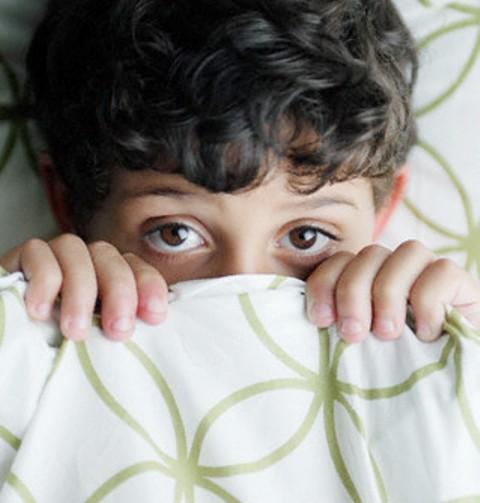Bed-wetting — also called nighttime incontinence or nocturnal enuresis — is involuntary urination while asleep after the age at which staying dry at night can be reasonably expected.
Soggy sheets and pajamas — and an embarrassed child — are a familiar scene in many homes. But don't despair. Bed-wetting isn't a sign of toilet training gone bad. It's often just a normal part of a child's development.
Generally, bed-wetting before age 7 isn't a concern. At this age, your child may still be developing nighttime bladder control.
If bed-wetting continues, treat the problem with patience and understanding. Lifestyle changes, bladder training, moisture alarms and sometimes medication may help reduce bed-wetting.
Symptoms
Most kids are fully toilet trained by age 5, but there's really no target date for developing complete bladder control. Between the ages of 5 and 7, bed-wetting remains a problem for some children. After 7 years of age, a small number of children still wet the bed.
When to see a doctor
Most children outgrow bed-wetting on their own — but some need a little help. In other cases, bed-wetting may be a sign of an underlying condition that needs medical attention.
Consult your child's doctor if:
- Your child still wets the bed after age 7
- Your child starts to wet the bed after a few months of being dry at night
- Bed-wetting is accompanied by painful urination, unusual thirst, pink or red urine, hard stools, or snoring
Causes
No one knows for sure what causes bed-wetting, but various factors may play a role:
- A small bladder. Your child's bladder may not be developed enough to hold urine produced during the night.
- Inability to recognize a full bladder. If the nerves that control the bladder are slow to mature, a full bladder may not wake your child — especially if your child is a deep sleeper.
- A hormone imbalance. During childhood, some kids don't produce enough anti-diuretic hormone (ADH) to slow nighttime urine production.
- Urinary tract infection. This infection can make it difficult for your child to control urination. Signs and symptoms may include bed-wetting, daytime accidents, frequent urination, red or pink urine, and pain during urination.
- Sleep apnea. Sometimes bed-wetting is a sign of obstructive sleep apnea, a condition in which the child's breathing is interrupted during sleep — often due to inflamed or enlarged tonsils or adenoids. Other signs and symptoms may include snoring and daytime drowsiness.
- Diabetes. For a child who's usually dry at night, bed-wetting may be the first sign of diabetes. Other signs and symptoms may include passing large amounts of urine at once, increased thirst, fatigue and weight loss in spite of a good appetite.
- Chronic constipation. The same muscles are used to control urine and stool elimination. When constipation is long term, these muscles can become dysfunctional and contribute to bed-wetting at night.
- A structural problem in the urinary tract or nervous system. Rarely, bed-wetting is related to a defect in the child's neurological system or urinary system.
Risk factors
Bed-wetting can affect anyone, but it's twice as common in boys as in girls. Several factors have been associated with an increased risk of bed-wetting, including:
- Stress and anxiety. Stressful events — such as becoming a big brother or sister, starting a new school, or sleeping away from home — may trigger bed-wetting.
- Family history. If one or both of a child's parents wet the bed as children, their child has a significant chance of wetting the bed, too.
- Attention-deficit/hyperactivity disorder (ADHD). Bed-wetting is more common in children who have ADHD.
Complications
Although frustrating, bed-wetting without a physical cause doesn't pose any health risks. However, bed-wetting can create some issues for your child, including:
- Guilt and embarrassment, which can lead to low self-esteem
- Loss of opportunities for social activities, such as sleepovers and camp
- Rashes on the child's bottom and genital area — especially if your child sleeps in wet underwear










